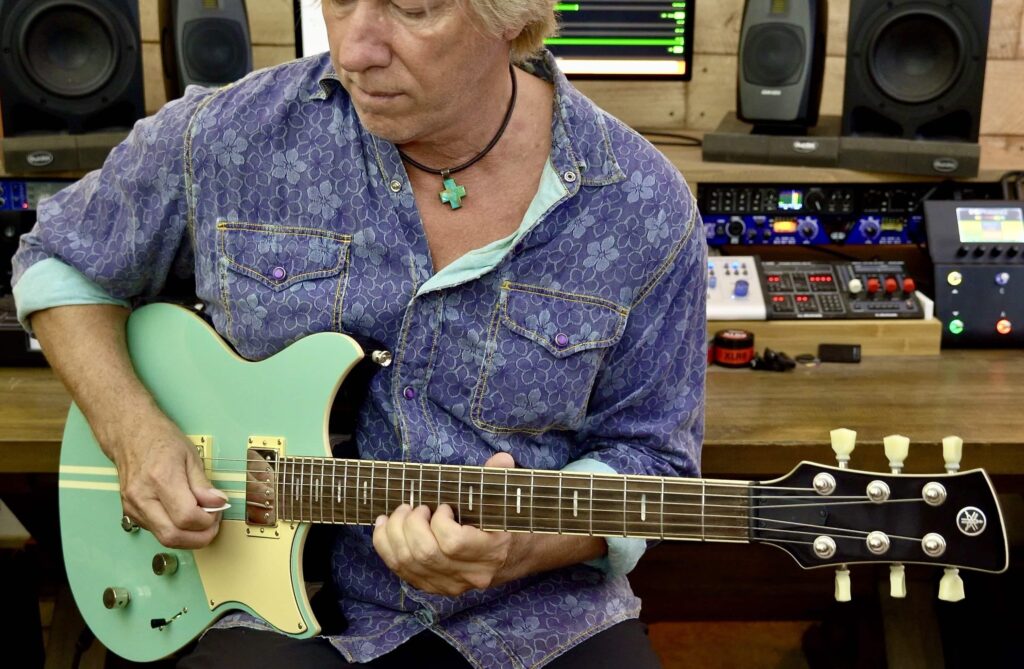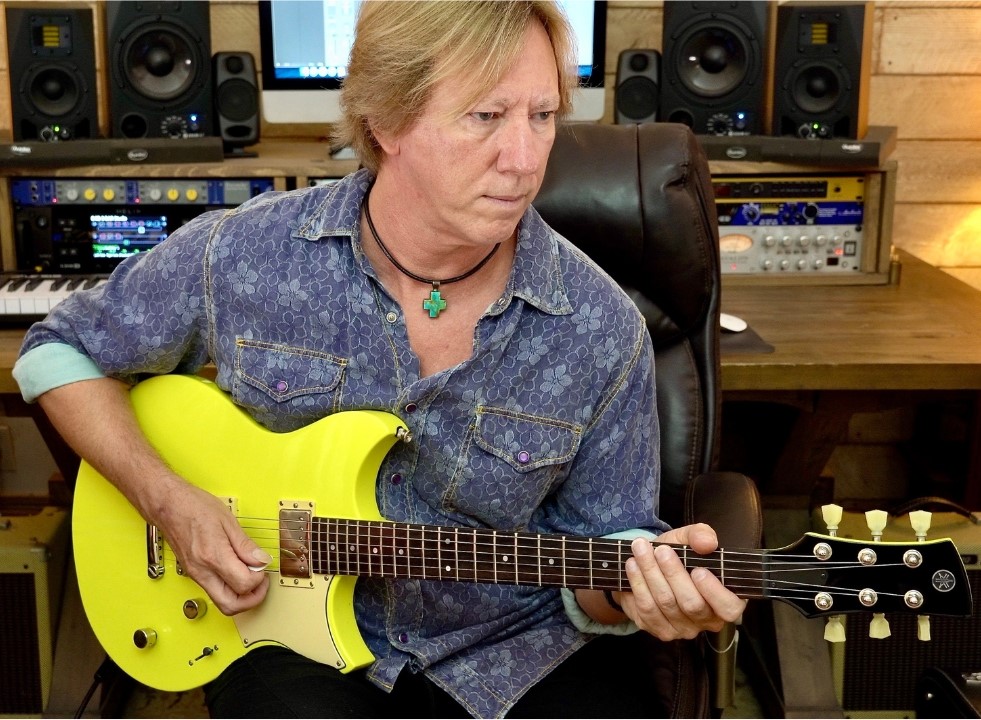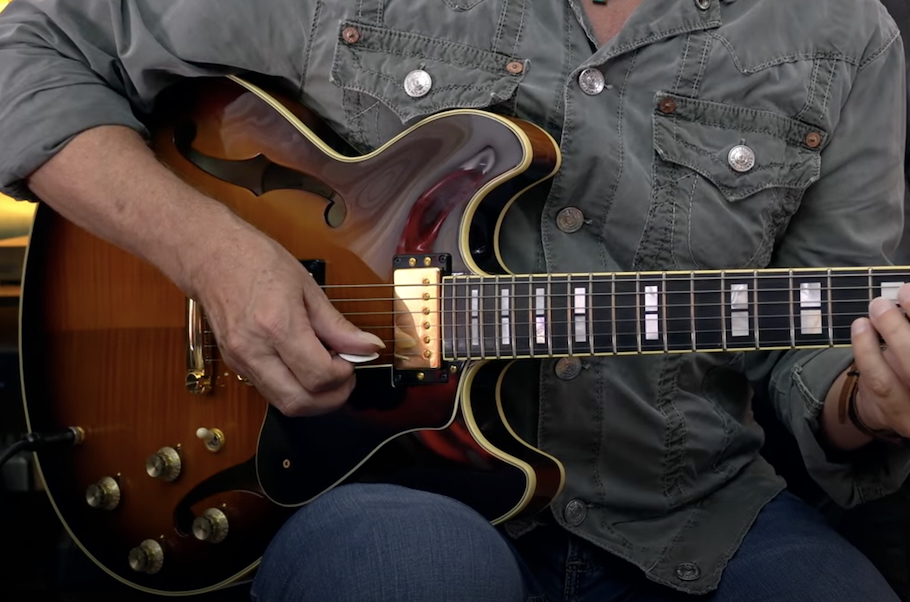The Power Of Five
Using the minor pentatonic scale.
As an online guitar instructor and Yamaha guitar clinician, I like to share ideas and concepts with students that they can apply quickly to their own playing, with a minimum of technical effort.
I recently spent several days in Nashville filming two new guitar courses. One course focuses on the art of looping rhythm and lead guitar phrases, while the other demonstrates how to apply major and minor pentatonic scales (i.e., five-note scales) over modal progressions.
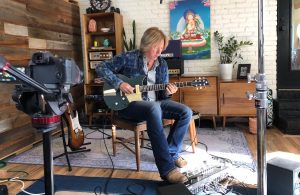
Both will be available for downloading in the near future, but in the meantime, I want to give you a taste of what’s to come with a lesson on evoking Dorian mode with the minor pentatonic scale — a shape every guitar player knows and loves.
Start Harmonizing
Let’s begin in the key of G and break down the notes, harmony and resulting modalities.
The G major scale consists of the notes G, A, B, C, D, E and F#.
As discussed in a previous posting, every major scale consists of seven tones, and those tones are used to build chords — a process known as harmonization. The G major scale harmony chords are Gma7, Ami7, Bmi7, Cma7, D7, Emi7 and F#mi7(b5). G major scale modes are created by simply inverting the notes to start on each scale degree (that is, step), as follows:
G Ionian = G A B C D E F# G with a tonal center of Gma or Gma7
A Dorian = A B C D E F# G A with a tonal center of Ami or Ami7
B Phrygian = B C D E F# G A B with a tonal center of Bmi or Bmi7
C Lydian = C D E F# G A B C with a tonal center of Cma or Cma7
D Mixolydian = D E F# G A B C D with a tonal center of Dma or D7
E Aeolian = E F# G A B C D E with a tonal center of Emi or Emi7
F# Locrian = F# G A B C D E F# with a tonal center of F#Dim or F#mi7(b5)
(Note: Modes are simply alternate scales created by starting at different steps within a scale. For more information, see my two-part blog series about major scale modes.)
I’m going to use the chords Ami, C and D from the G harmonized major scale to build an A Dorian chord progression. Typically, the first chord of the progression will be the tonal center resolution point of the progression. The tonal center chord determines the modality, as shown here:
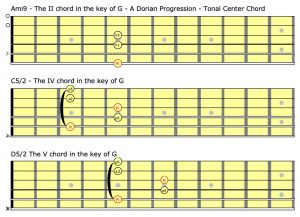
Creating Melodies and Solos
Now that we have an A Dorian chord progression, we can assign the A Dorian mode (that is, the G major scale) to create melodic lines and solos. However, rather than using the seven-note Dorian mode, let’s use the five-note A minor pentatonic scale instead. This will give us all the chord tones of Ami7, plus the perfect 4th — a scale choice that’s going to sound extremely strong and powerful.
Using the A minor pentatonic scale alone won’t give us the characteristic note of the A Dorian mode (F#), but we can easily add that note … or we can simply play a B minor pentatonic scale by shifting the shape at the fifth fret up to the seventh fret. The notes we get by doing this are:
B = 9th of the Ami9 chord
D = Perfect 4th (this exists in the A minor pentatonic scale as well, although it’s not a chord tone)
E = Perfect 5th of the Ami9 chord
F# = Major 6th (the A Dorian characteristic note)
A = Root note of the Ami9 chord
As you can see, we get three chord tones of the Ami9 chord, as well as the Major 6th characteristic note, so a great approach would be to glide between the same minor pentatonic shapes at the two fretboard locations (fifth fret and seventh fret).
To give you even more options, try playing the same minor pentatonic shape at the twelfth fret (E minor pentatonic). Here are the notes of the E minor pentatonic scale:
E = Perfect 5th of the Ami9 chord
G = Minor 7th (b7) of the Ami9 chord
A = Root note of the Ami9 chord
B = 9th of the Ami9 chord
D = Perfect 4th (not a chord tone)
As you can see, the E minor pentatonic scale gives us four chord tones of the Ami9 chord.
The cool result of using all three fretboard locations is that playing the same lick in each location will yield varying notes, and therefore, different musical results. Give it a try! I think you’ll like being able to expand your musical palette simply by shifting the same information to a new location on the guitar neck.
The Video
In this video, fellow guitarist Brett Papa and I demonstrate how to use the three minor pentatonic scales described above to create beautiful Dorian-flavored solos:
It’s a great lesson that lasts about an hour, but I think you’ll enjoy the banter and the value of the tips and tricks being shared.
The Guitar
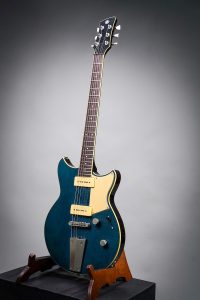
The guitar I’m using in this video is a Yamaha Revstar 502TFM that features a subtle flame maple top in a Vintage Japanese Denim finish. The body and neck are solid mahogany, and the fretboard is rosewood with jumbo frets and a 13-inch fretboard radius. The pickups are Yamaha P90 single coils; I especially like the tone of the neck pickup, which I think sounds really warm and bluesy. The guitar is running into a Line 6 Helix, and all the tones were recorded directly to Brett’s digital audio workstation.
The Wrap-Up
It’s easy to expand the potential and value of the pentatonic-based licks that are commonly used in improvisations simply by shifting them into different fretboard locations. Playing the same licks in new locations will yield fresh musical ideas that work independently or in combination with other locations. It’s a great way to improve instantly … by working smarter (not necessarily harder) on your craft.
Photographs courtesy of the author.
Check out Robbie’s other postings.
Click here for more information about Yamaha Revstar guitars.
Click here for more information about the Line 6 Helix guitar processor.











